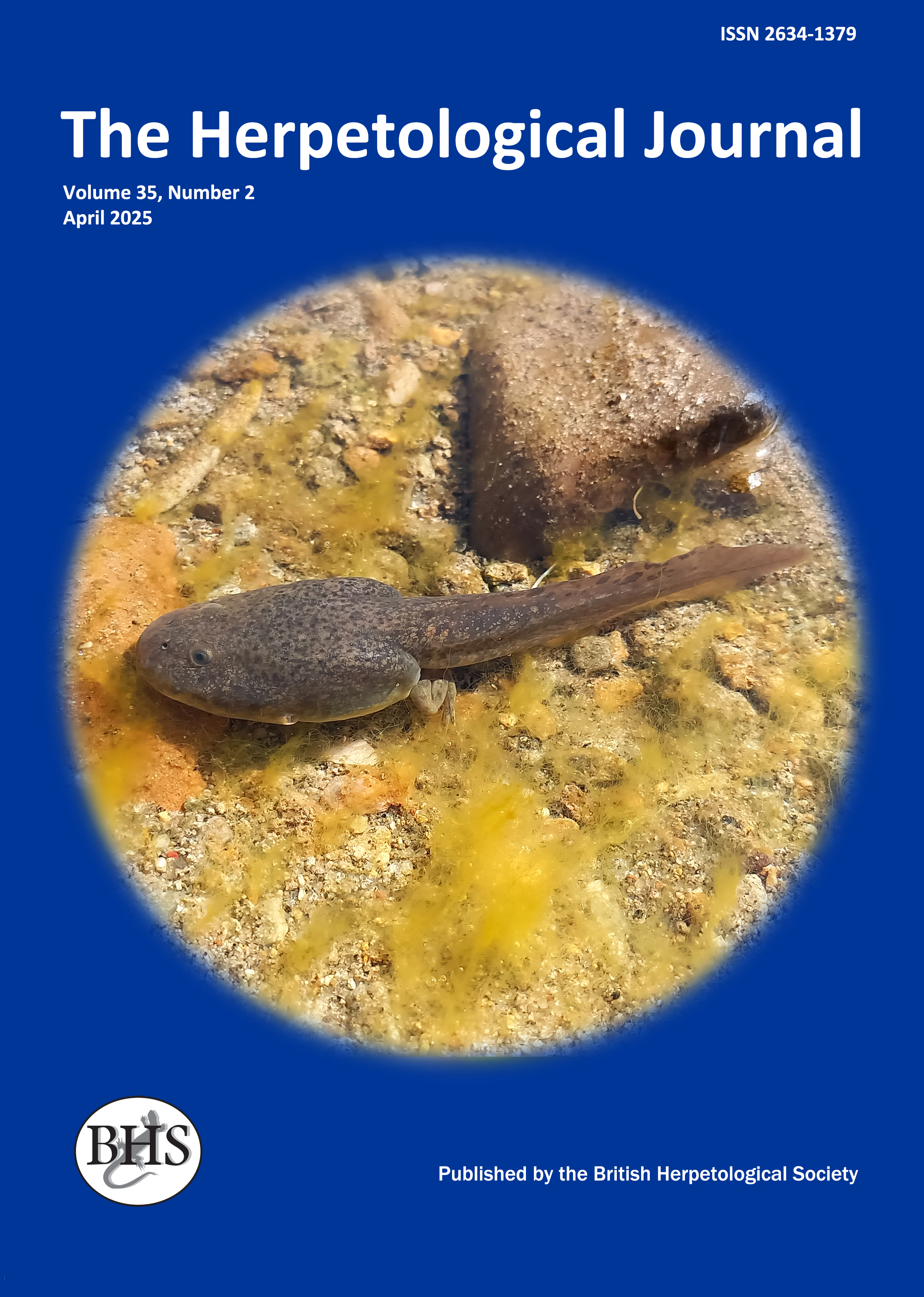
The Herpetological Journal
The Herpetological Journal is the Society's prestigious quarterly scientific journal. Articles are listed in Biological Abstracts, Current Awareness in Biological Sciences,Current Contents, Science Citation Index, and Zoological Record.
ISSN 0268-0130
2021 Impact Factor from Clarivate for the Herpetological Journal is 1.194, an increase of 0.332 from 2020.
pdf 01. Developmental arrest in Leptodactylus fuscus tadpoles (Anura: Leptodactylidae) III effect of length of arrest period on growth potential
1094 downloads
Open Access
pp.85-92
Authors: J. R. Downie And A. Weir
Abstract: Eggs of the neotropical frog Leptodactylus fuscus (Anura: Leptodactylidae) are laid in foamy masses in burrows close to sites of temporary pools. After hatching, the tadpoles make a new form of foam and, if no rain falls, enter a kind of developmental arrest. This may last around 30 days after egg deposition. In the experiments reported here, the ability of tadpoles to grow was tested after different periods of developmental arrest in foam nests. In the short term, tadpoles in foam for 15 days grew faster than those in foam 5 or 25 days (these grew at about the same rate). However, when raised to metamorphosis, a different pattern emerged. The longer tadpoles remained in foam, the slower they grew and the smaller the proportion that eventually metamorphosed. There was considerable variation between nests, with some showing high metamorphic potential 30 days after deposition but others low after only 18 days. Unexpectedly, size at metamorphosis varied with time spent in the nest. The longer tadpoles remained in the nest, the larger their mean size at metamorphosis, but also the greater their variability in size at metamorphosis. Some of the large tadpoles differed in shape from normal. Tadpoles allowed to grow soon after nest deposition grew rapidly to metamorphose at relatively smaller size and low variability. The significance of these results for the success of the developmental arrest strategy is discussed.

